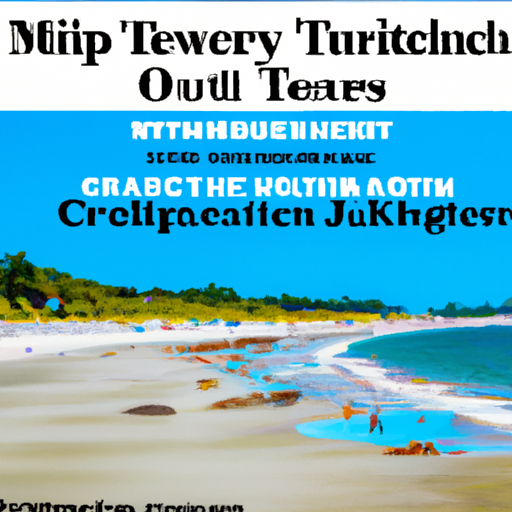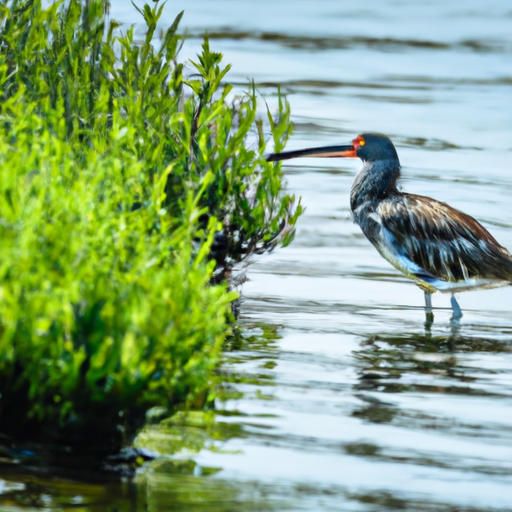Have you ever wondered what type of wildlife you might encounter at Myrtle Beach State Park? Well, you’re in luck! This beautiful coastal park is home to a wide variety of animals and birds that call the park their home. From playful dolphins in the ocean to majestic sea turtles nesting on the shore, there is something for every nature lover to marvel at. In this article, we’ll delve into the fascinating world of wildlife at Myrtle Beach State Park and discover some of the incredible creatures that inhabit this scenic slice of paradise.
When you visit Myrtle Beach State Park, keep your eyes peeled for the adorable and playful Atlantic bottlenose dolphins that can often be spotted swimming offshore. These intelligent creatures are known for their acrobatic displays and they never fail to put on a show for eager onlookers. If you’re lucky, you might even catch a glimpse of a mother and calf swimming together, a truly heartwarming sight.
But the dolphins aren’t the only aquatic creatures that call Myrtle Beach State Park their home. The park’s salt marshes and tidal creeks are teeming with life, including various species of fish, crabs, and mollusks. You might even spot a gentle manatee grazing on the seagrass or a graceful pelican diving into the water in search of its next meal. The park’s diverse ecosystem provides a haven for these fascinating creatures and offers visitors a chance to witness their natural behaviors up close.
While the shoreline may be the main attraction of Myrtle Beach State Park, don’t forget to explore the park’s inland areas as well. The lush maritime forest is home to an array of bird species, including the colorful painted bunting and the majestic bald eagle. Take a leisurely stroll along the park’s trails and you’ll be treated to the melodious songs of warblers and thrushes, while overhead, you might catch a glimpse of a red-tailed hawk soaring through the sky.
In conclusion, Myrtle Beach State Park is a haven for wildlife enthusiasts, offering a chance to observe a wide range of animals and birds in their natural habitat. From the playful dolphins in the ocean to the majestic birds in the forest, there is something for everyone to enjoy. So pack your binoculars, lace up your hiking boots, and get ready for an unforgettable wildlife adventure at Myrtle Beach State Park. Myrtle Beach State Park is a popular destination for nature enthusiasts and outdoor lovers. Located in Myrtle Beach, South Carolina, the park offers a diverse range of wildlife and natural habitats. From birds and aquatic creatures to terrestrial mammals and insects, the park is teeming with fascinating wildlife. Whether you’re an avid birder, a marine life enthusiast, or simply someone who appreciates the beauty of nature, there is something for everyone to discover at Myrtle Beach State Park.
Overview of Myrtle Beach State Park
Situated along the stunning coastline of South Carolina, Myrtle Beach State Park stretches over 312 acres and offers a unique combination of pristine beaches, maritime forest, and saltwater marshes. Its convenient location near the town of Myrtle Beach makes it easily accessible for locals and tourists alike.
Park’s Location
Myrtle Beach State Park is located on the southern end of the Grand Strand, a 60-mile stretch of picturesque beaches. Its address is 4401 South Kings Highway, Myrtle Beach, South Carolina. The park is situated between the Atlantic Ocean and Kings Highway, providing visitors with breathtaking views of the coastline.

Park’s Size and Features
Boasting 312 acres of natural beauty, Myrtle Beach State Park offers a variety of recreational activities for visitors to enjoy. Whether you’re strolling along the sandy shoreline, exploring the miles of hiking trails, or picnicking in the shade of the coastal forests, there is something for everyone to appreciate at this stunning park.
Birds at Myrtle Beach State Park
If you’re a bird enthusiast, Myrtle Beach State Park is a must-visit destination. With its diverse range of habitats, the park attracts a wide variety of bird species throughout the year.
Variety of Bird Species
From shorebirds and wading birds to songbirds and birds of prey, Myrtle Beach State Park is a bird-watcher’s paradise. The park is home to over 300 species of birds, both resident and migratory. This makes it an ideal location for observing rare and unusual bird sightings.
Best Bird-Watching Spots
There are several prime locations within the park for bird watching. The saltwater marshes and freshwater ponds provide excellent opportunities to see waterfowl, herons, and egrets. The maritime forest is home to a variety of songbirds, while the beachfront attracts a host of shorebirds, including sandpipers and terns. Mole Beach and the Nature Center are particularly popular spots for observing a wide variety of bird species.

Aquatic Wildlife at Myrtle Beach State Park
Myrtle Beach State Park is not only a haven for birdwatchers but also for those interested in the marine life found along the coast.
Marine Life in Saltwater Marshes
The saltwater marshes within the park are teeming with marine life, making them an important and vibrant ecosystem. Visitors can glimpse a variety of creatures, including crabs, shrimp, and a variety of fish that call the marshes home. Exploring the marshes on a kayak or canoe allows you to get up close and personal with this fascinating underwater world.
Fish and Invertebrates in the Ocean
The Atlantic Ocean that borders the park offers an abundance of fish and invertebrates. From colorful fish like red drum and flounder to intriguing invertebrates such as starfish and sand dollars, the waters off the coast of Myrtle Beach State Park are filled with an impressive array of marine life.
Terrestrial Wildlife at Myrtle Beach State Park
While the park’s coastal areas are a haven for water-loving creatures, the inland regions are home to a variety of terrestrial species.
Mammals in the Forests
The maritime forest within the park provides shelter and sustenance for a range of mammals. Visitors may be lucky enough to spot white-tailed deer, raccoons, squirrels, and even the occasional bobcat. Exploring the forest trails in the early morning or late afternoon increases your chances of encountering these fascinating creatures.
Reptiles and Amphibians in the Park
Myrtle Beach State Park is also home to a variety of reptiles and amphibians. From the colorful Eastern box turtle to the secretive American alligator, these creatures play an essential role in the park’s ecosystem. Keep an eye out for snakes, frogs, and lizards as you explore the park’s diverse habitats.
Endangered Species at Myrtle Beach State Park
As with many natural areas, Myrtle Beach State Park is home to several endangered species. Efforts are underway to protect and preserve these animals and their habitats.
Conservation Efforts to Protect Endangered Wildlife
Myrtle Beach State Park actively participates in various conservation programs to protect and restore the habitats of endangered species. These efforts include habitat restoration, environmental education, and research collaborations with local universities and organizations. By raising awareness and taking action, the park seeks to ensure a future for these vulnerable creatures.
Notable Endangered Species
Among the notable endangered species found at Myrtle Beach State Park is the loggerhead sea turtle. These magnificent creatures nest on the park’s beaches, and the park’s staff and volunteers work tirelessly to protect their nests and educate the public about the importance of sea turtle conservation. Other endangered species in the park include the red-cockaded woodpecker and the Carolina diamondback terrapin.
Fascinating Insects at Myrtle Beach State Park
While often overlooked, the insect world at Myrtle Beach State Park is just as fascinating as its larger inhabitants.
Diverse Insect Species
The park is home to a wide variety of insect species, including butterflies, dragonflies, beetles, and ants. Exploring the park’s gardens and meadows will allow you to observe these intricate and often overlooked creatures up close. Take your time to appreciate their beauty and the important role they play in the ecosystem.
Insect Habitats and Behaviors
The different habitats within the park provide unique environments for insects to thrive. From the dense foliage of the maritime forest to the open meadows near the beach, each area offers a different set of challenges and opportunities for the insect population. Observing their behaviors and interactions with the surrounding flora and fauna is a captivating experience.
Flora and Fauna Interactions at Myrtle Beach State Park
At Myrtle Beach State Park, the intricate relationships between flora and fauna are on full display.
Role of Plant Life in Wildlife Support
The diverse plant life within the park provides crucial food and shelter for the park’s wildlife. The maritime forest, with its towering live oaks and palmetto trees, offers protection and nesting sites for birds and mammals. The saltwater marshes support a wide range of aquatic creatures, while the beachfront provides nesting grounds for sea turtles and feeding opportunities for shorebirds.
Examples of Symbiotic Relationships
Symbiotic relationships between plants and animals are abundant within the park. For example, certain species of birds rely on specific trees for nesting, while the trees benefit from the birds spreading their seeds. Butterflies and bees are crucial pollinators for many of the park’s flowering plants. These interconnected relationships highlight the delicate balance of nature and the importance of conservation.
Wildlife Viewing Opportunities at Myrtle Beach State Park
For visitors looking to observe wildlife firsthand, Myrtle Beach State Park offers a plethora of opportunities.
Touring the Park with Nature Guides
The park offers guided nature tours and programs led by knowledgeable park rangers and naturalists. These tours provide in-depth information about the park’s wildlife, habitats, and conservation efforts. Whether you join a bird-watching walk or a beach exploration program, these guided tours offer an immersive and educational experience for wildlife enthusiasts of all ages.
Tips for Wildlife Observation
If you prefer to explore the park on your own, there are a few things to keep in mind when observing wildlife. Respecting the animals’ space, moving quietly, and avoiding sudden movements increases your chances of seeing wildlife up close. Binoculars and a camera with a zoom lens can also enhance your wildlife viewing experience.
Environmental Education Programs at Myrtle Beach State Park
Myrtle Beach State Park is dedicated to providing educational opportunities for visitors of all ages.
Learning About Local Wildlife
The park offers a variety of environmental education programs aimed at increasing visitors’ understanding and appreciation of the park’s wildlife and habitats. From interactive exhibits at the Nature Center to hands-on workshops and presentations, these programs provide a fun and engaging way to learn about the fascinating creatures that call Myrtle Beach State Park home.
Hands-On Activities for All Ages
For those looking to get their hands dirty, the park offers a range of hands-on activities. From seashell and fossil hunts to nature-themed art projects and animal tracking, there is something for everyone to enjoy. By actively participating in these activities, visitors gain a deeper understanding of the park’s wildlife and the importance of conservation.
Conclusion
Myrtle Beach State Park is a treasure trove of wildlife, offering visitors a chance to connect with nature and explore the diverse range of habitats found along the South Carolina coast. From bird watching and marine life observation to exploring the fascinating world of insects and learning about symbiotic relationships, there is something for everyone to discover at this remarkable park. By respecting the animals’ habitats and engaging in educational programs, you can help protect and preserve the unique wildlife that makes Myrtle Beach State Park such a special place. So grab your binoculars, put on your hiking boots, and embark on a wildlife adventure you won’t soon forget.
